On the Road is a weekday feature spotlighting reader photo submissions.
From the exotic to the familiar, whether you’re traveling or in your own backyard, we would love to see the world through your eyes.
JanieM
We’re off to the hinterlands now. My son taught for several years at Yulin* University in Shaanxi province, about 500 miles west and a bit south from Beijing and not far from Inner Mongolia. It’s a fair-sized city, booming somewhat when I was there because of oil and gas exploration. The setting is the Loess Plateau – not desert, but dry and dusty and rather barren-looking. I was there for four weeks, during the first three of which the college was closed for the long Spring Festival break. The students were gone, but the city was still bustling.
*A Google maps search yields four Yulins in China. This is not the infamous one.
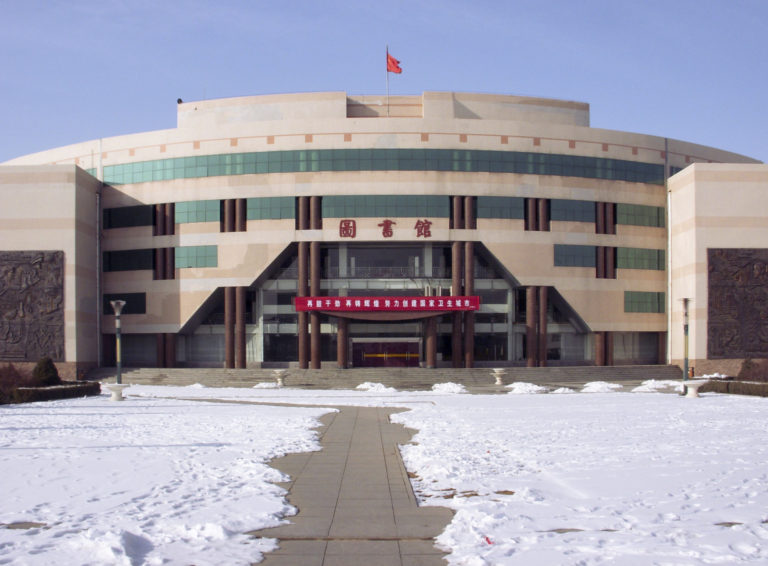
The university library, intended to be imposing and succeeding.
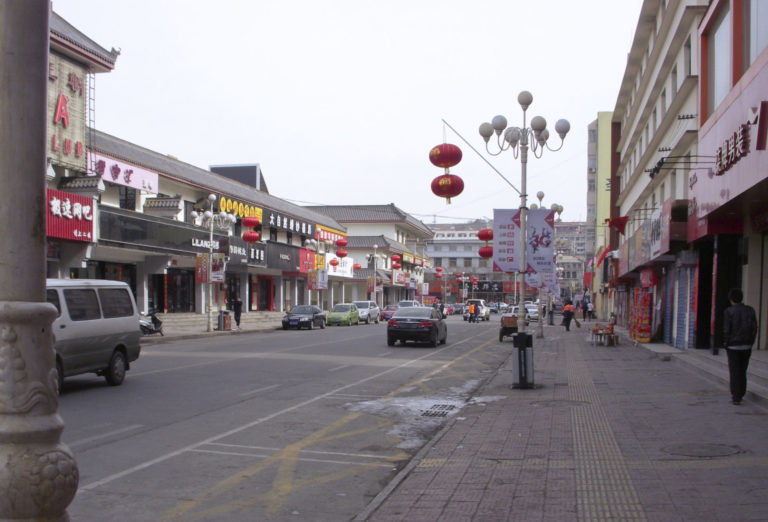
A downtown street. There were decorations everywhere for Spring Festival, almost always red. But then, red is very common regardless.
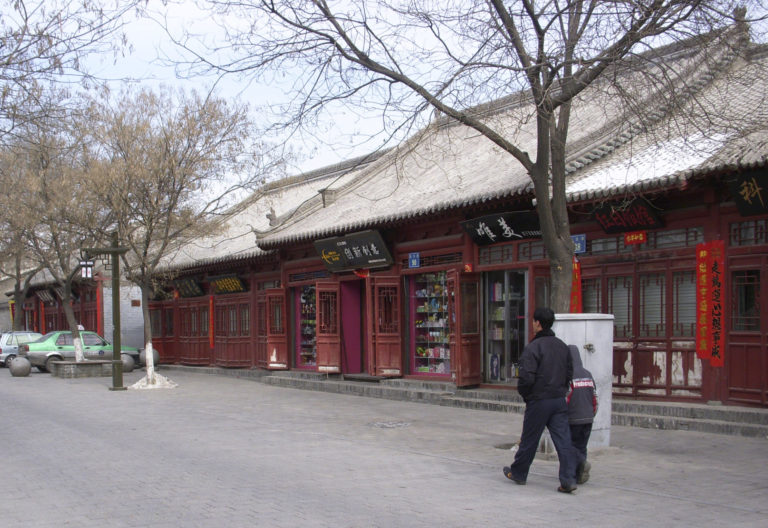
The previous picture was any old street in a modern downtown. This is a small section of First Street, which has been restored to someone’s idea of an older style. There are shops and restaurants all along it, and it’s a bit touristy, but local people shop there too. We bought some cut-out art and a wall hanging (two separate shops). The picture of the two little boys at the end of set #1 was taken along First Street.
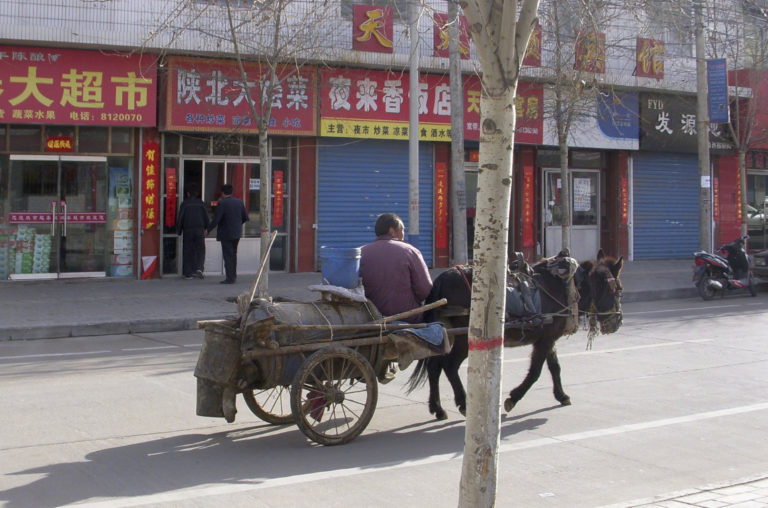
This street ran along one border of the campus. It was lined with food joints, an internet café, and a variety of other small shops, much as you’d expect in a university neighborhood.
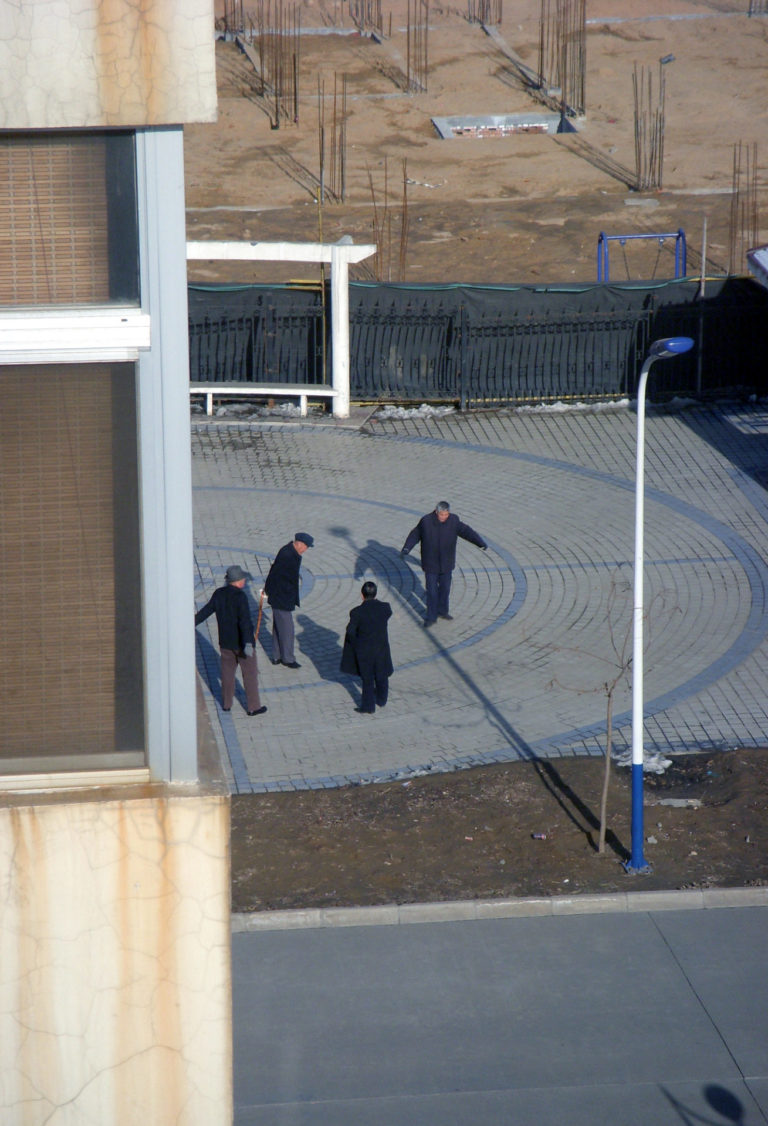
These gentlemen gathered most mornings to do tai chi and chat in the tiny park next to the building where I stayed. This picture carries a bit of extra nostalgia with it, because it was taken on the morning when I was packing up to leave.
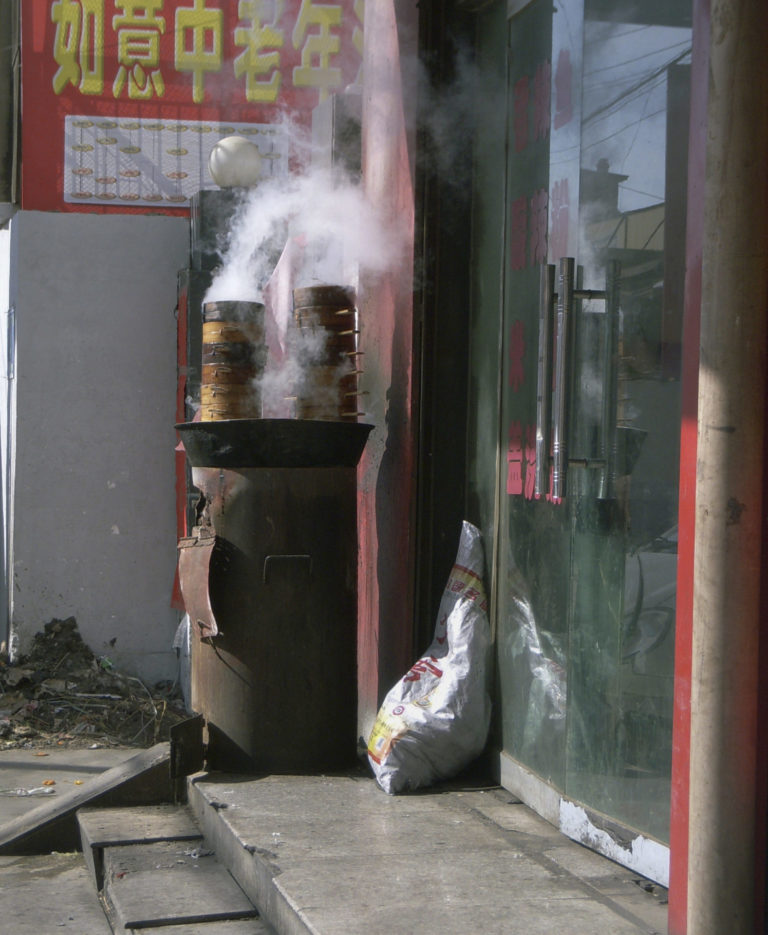
The neighborhood near the college had lots of small food places where students congregated. The shops specialized – the noodle shop didn’t sell rice dishes, the dumpling shop didn’t sell noodle dishes, etc. The noodle shop would give you a cup of the hot noodle-cooking liquid if you asked for something to drink.
The shop in the picture was my favorite place to eat breakfast. It specialized in baozi, or steamed buns, but a smaller kind than I’ve ever seen in the US. (Not that I’ve haunted our bigger cities….) Those steamed buns were my favorite of all the great food I ate on that trip; I missed them for years after I came back home.
Lots of places had steaming rigs like this for cooking baozi or dumplings outdoors. Along with the baozi, this place sold a soup made of a delicious broth with egg dribbled into it (as in egg drop soup), but also some fresh greens and herbs added at the last minute.
The food was fresh and delicious everywhere we went. In the noodle shop, you could watch someone roll and flip the dough and cut it into noodles. In the bigger restaurants you could have a private room and choose from a massive variety of dishes. There was always hot sauce on the table, plus in the smaller places a small roll of paper, off of which you’d tear a bit to use as a napkin. Finished with the napkin? Throw it on the floor. Tea wasn’t provided automatically, and it wasn’t cheap when ordered.
Jamie and two of his friends took me out for hot pot for my sixtieth birthday – another delicious meal, and quite different from the hot pot we’d had in Beijing. I was born in 1950, the year of the Tiger, and 2010 was the beginning of a new sixty-year cycle. Who knew!
For me the most bemusing feature of eating out was that every establishment – from the smallest noodle joint to the fancy place where Jamie’s department had a banquet – had little plastic containers of dice on the table so people could play a betting/drinking game. I don’t drink, and I wondered if declining to play would be seen as impolite. But Jamie’s friends said that since I was female, and also old (!!), no one would be offended if I didn’t play. At the banquet, one of the Party/departmental officials tried to explain the betting game to me, with one of the professors translating. Luckily, it went no further than explanations.
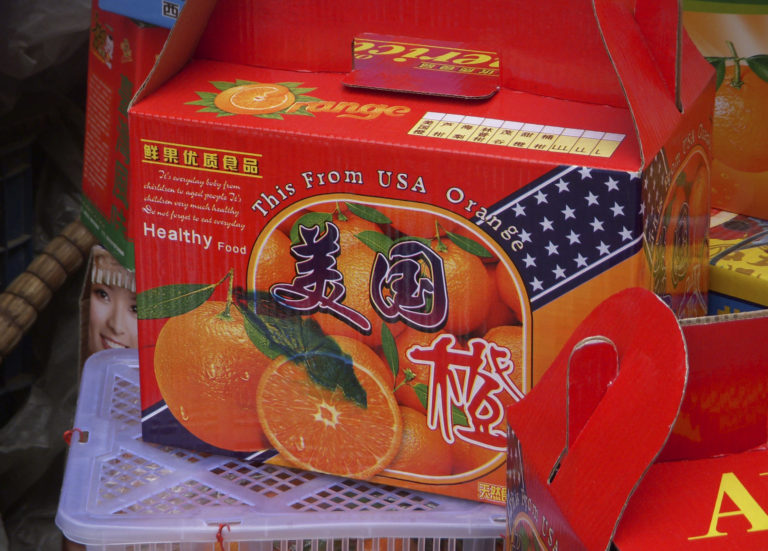
More fun with language.
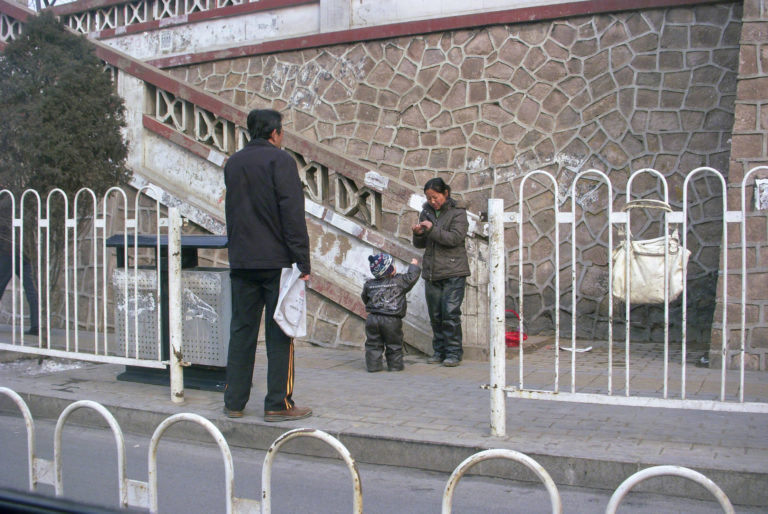
Street life.

Mary G
What a wonderful experience! I always enjoy encounters with local people and eating in neighborhood restaurants. I remember it more than the tourist stuff sometimes.
J R in WV
Also born in 1950 — does new 60 year cycle starting in 2010 m3an we’ve both got 50 more years?
I’m interested in the future events coming up, but plan to wear a mask, and CC a pistol because the crazifaction number appears to be exceedingly higher than 27% now. Is that how I want to spend the next 49 years? Nope!
Thanks for the photos, very swell! Now back to bed…
JPL
What an amazing adventure, and thank you for sharing your photos and memories with us.
YY_Sima Qian
I have never traveled to northern Shaanxi Province, where Yulin is. The more famous site in southern part of the province – Xi’an and surroundings. I have a colleague from Yulin, and he always speak of his hometown with fondness.
I do love Shaanxi/northwestern Chinese food. Hearty and tasty! Southern Shaanxi has much greater variety, due to Xi’an being at the nexus of age old trade routes going into Sichuan to the south, the Gansu Corridor to the west, to Turkic and Iranian cultural spheres in Xinjiang and beyond. Lots of protein and carbohydrates, though, so not great for the waistline or blood pressure.
These days most restaurants in China will service you cheap tea for free with the meal, though it is very cheap tea.
JanieM
@YY_Sima Qian: People mentioned often that there were regional food specialties in China, and also that Chinese food in America wasn’t Chinese. ;-)
There were times when I wasn’t sure what meat I was eating — Jamie didn’t know the vocabulary for distinguishing mutton from lamb from goat. There was one flavor that I wasn’t fond of in some dishes, and I thought it might be one of those meats; I don’t care for lamb, so I imagined I’d react even more strongly to mutton or goat.
But it turned out to be the local style of bean curd. Surprising, because I eat tofu often at home, but this version was very strongly flavored by their fermentation process. (I guess….?)
Xi-an — we debated going. Jamie had been there a couple of times and wanted to take me, but I wasn’t anxious to get on a crowded train for twelve hours, and in general I like to park myself somewhere when I travel, and get immersed in local life, rather than skip along trying to catch all the sights. I would say maybe next trip, but it seems wildly unlikely that I’ll ever get to China again.
cope
It looks like you had a pretty authentic experience on this trip. Though my adventurous foreign travel days are likely behind me (also born in 1950), I always enjoyed it most when there were the fewest fellow tourists and the least touristy environment around me. Thank you for showing us these pictures.
YY_Sima Qian
@JanieM:
These days you can take a high speed train from Yulin to Xi’an and cover the > 500 kms distance in 5.5 hrs (which is not very fast by Chinese standards), or regular express train in 7.5 hrs. Only a few trains a day, though. Even today Yulin is still relatively off the beaten path. After bit of research, it seems there are a number of interesting attractions in and around Yulin, so I may have to check it out at some point.
Did you visit or stay in cave dwellings that the region is famous for during your trip?
The people and culture of northern Shaanxi have been lionized and celebrated in CCP propaganda over the decades. After the Communists were uprooted from its base area in southern China in 1935, went on the arduous Long March through southwestern and northwestern China, they finally arrived and settled in this poor and marginalized region (around Yan’an, ~ 200 kms south of Yulin) in 1935 to reorganize and recuperate. From this region, over the course of WW II, the Communist forces advanced into the wide swathes of northern China under Japanese occupation, to contest and seize control of the rural areas, from which it in turn contested and won control over Mainland China against the Nationalists after WW II.
Elma
In our tour group there were some guys from NYC. When we arrived in Xi’an, one of them exclaimed, “This place is larger than New York City and I never heard of it before!!” Our guide pointed out that this sentiment could apply to many cities in China. We say people doing Tai Chi everywhere in the mornings, and in the evening, they would gather in groups to dance to techno-pop music from boom boxes.
JanieM
@YY_Sima Qian:
There were enough attractions to keep me busy, along with all the socializing, plus a week of team-teaching with my son at the end of my visit. I thought it was a very interesting city/area, but I had/have no benchmark to compare it to — for all I know, every city of about that size in China would be just as interesting.
The next set of pictures will include a couple shots of abandoned cave dwellings. There were some near Qing Sun Yi temple/monastery, where we spent an afternoon, but the ones we saw weren’t inhabited as of 2010.
A question for you: is the dice/drinking game played in other parts of China? I don’t remember dice on the tables in restaurants in Beijing, but then my week in Beijing was a whirlwind of sightseeing, jet lag, and newness, and I might just have missed them.
YY_Sima Qian
@JanieM: I think the dice game is often found at restaurants in Chengdu and Chongqing, famous for their laid back life styles, but I do not recall them in restaurants in Xi’an. Certainly it is not common in restaurants in the rest of China. However, dice games are staples in KTVs all across the country. It can be fun when fully inebriated, and facilitates further copious consumption of alcohol. :-)
YY_Sima Qian
@Elma:
Xi’an is a great place to get a sense of the 1st millennium of Chinese imperial/dynastic history. Beijing and Hangzhou are great for the 2nd millennium.
The current city, with its intact walls, actually dates from the Ming Dynasty (from the 15 – 17th century), and is built on the ruins of old imperial palace city from the Tang Dynasty (7th – 9th century), when it was the capital. The actual Tang era metropolis (where ordinary people had lived) was adjacent (to the immediate south) and had at least twice the area. It had well over a million inhabitants, with merchants, traders, artisans, performers, missionaries and diplomatics from all across the Tang Empire and East/Southeast/Central Asia, all the way to Persia and Arabia, and places of worship for Taoism, Buddhism, Manichaeism, Zoroastrianism, Islam, Judaism and Nestorian Christianity. It was truly an epoch moment in Chinese civilization.
Most Chinese get emotional at times when visiting the city and surrounding sites, because the temples, tombs and ruins are all intimately familiar from the histories, literatures and poetry that we learned since elementary school. It may be impossible for foreigners to achieve the same resonance, other than Japanese and Koreans.
The Shaanxi Provincial Museum remain my favorite in all of China.
JanieM
@YY_Sima Qian:
Not exactly the same, I suppose, but that sounds like me in London. :-)
YY_Sima Qian
@JanieM: I had the same chills when visiting Galleria degli Uffizi, Galleria dell’Accademia, Cattedrale di Santa Maria del Fiore in Florence. Seeing the funerary monuments of famous Florentines in Basilica di Santa Croce must be a mere shadow of your experience in the Westminster Abbey.
JanieM
@YY_Sima Qian: Maybe so…..I don’t know!
As an aside, I’ve never been to Florence, or Italy in general — a sad omission from my travel adventures. In England, the place that moved me even more was York Minster — I think because of the grandeur of its open spaces, which have a quite different feel from Westminster Abbey. But yes, I was overwhelmed by both of them.
dnfree
I’m very late to your pictures this week. They continue to be fascinating and I enjoy both what reminds me of our 2008 standard tour and what is new. We STILL miss the food we had, and everyone was so solicitous of me as a vegetarian. Also thanks to YY_Sima Qian for the comments here as well as on the Covid posts.
You make me think maybe I should look back at our trip to the Yellow Mountains and see if I can find some photos to share. There weren’t many “western” visitors there; it seemed to be a site very significant to Chinese tourists.